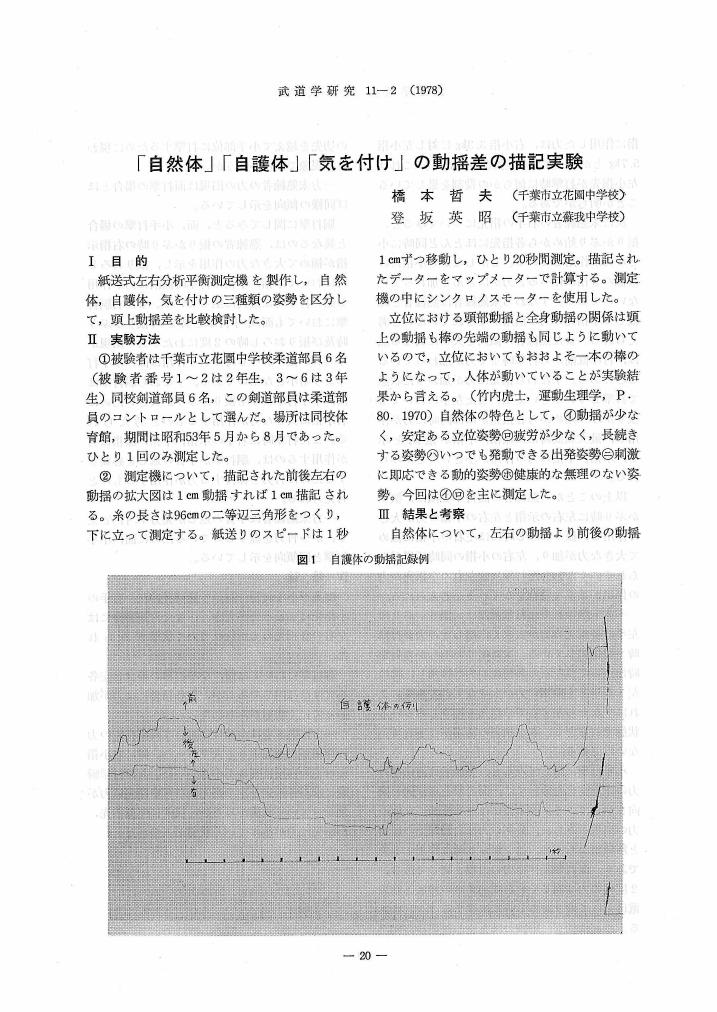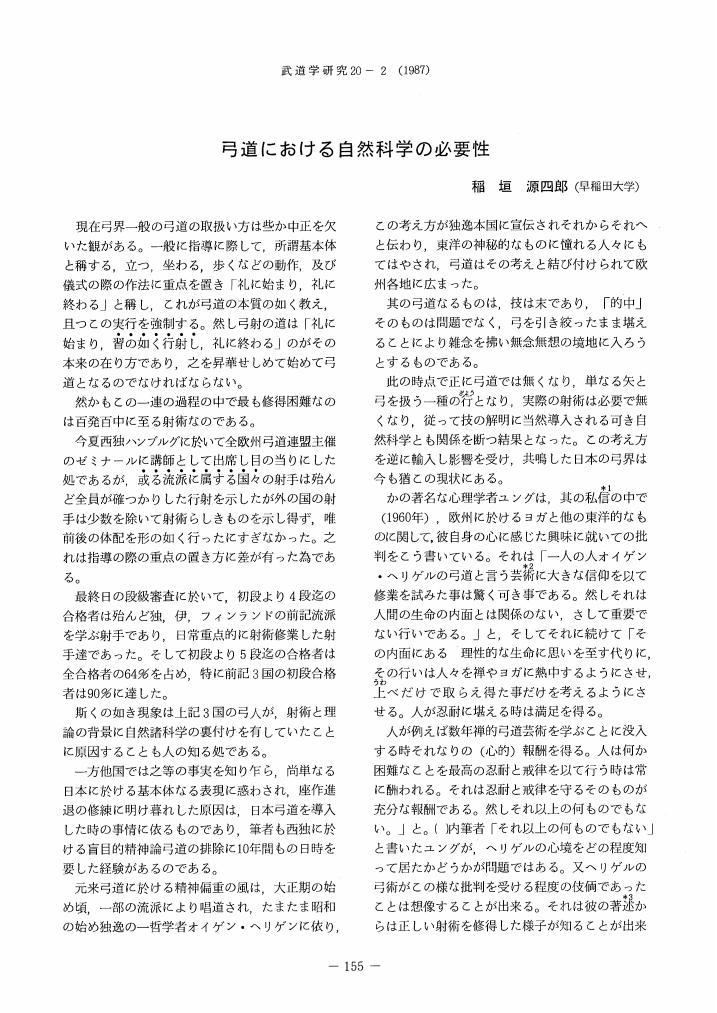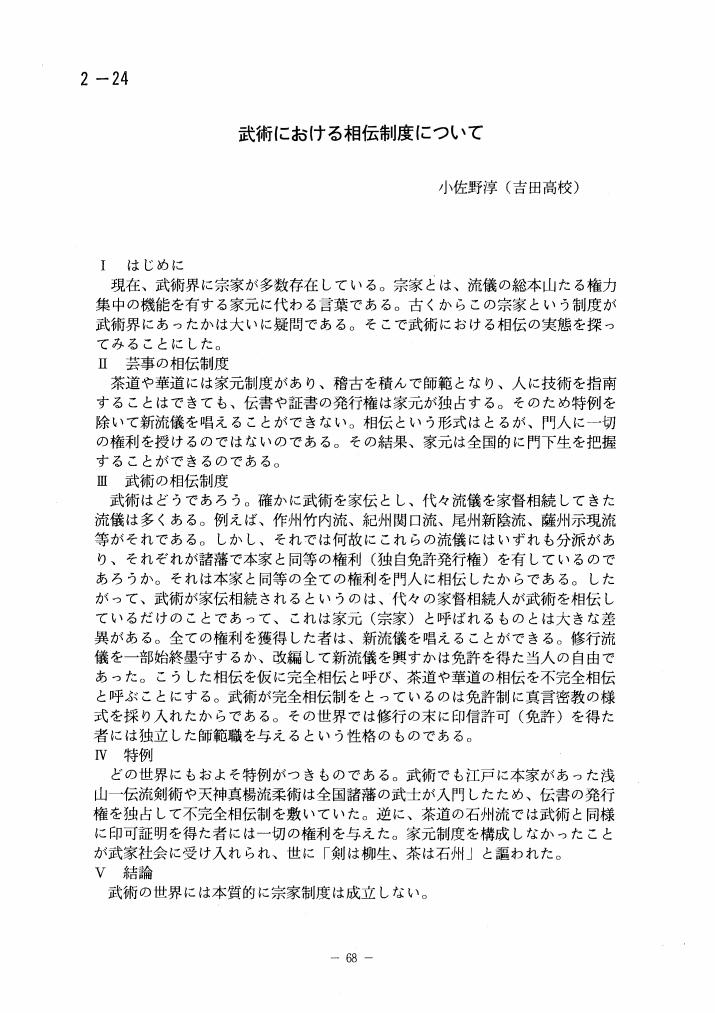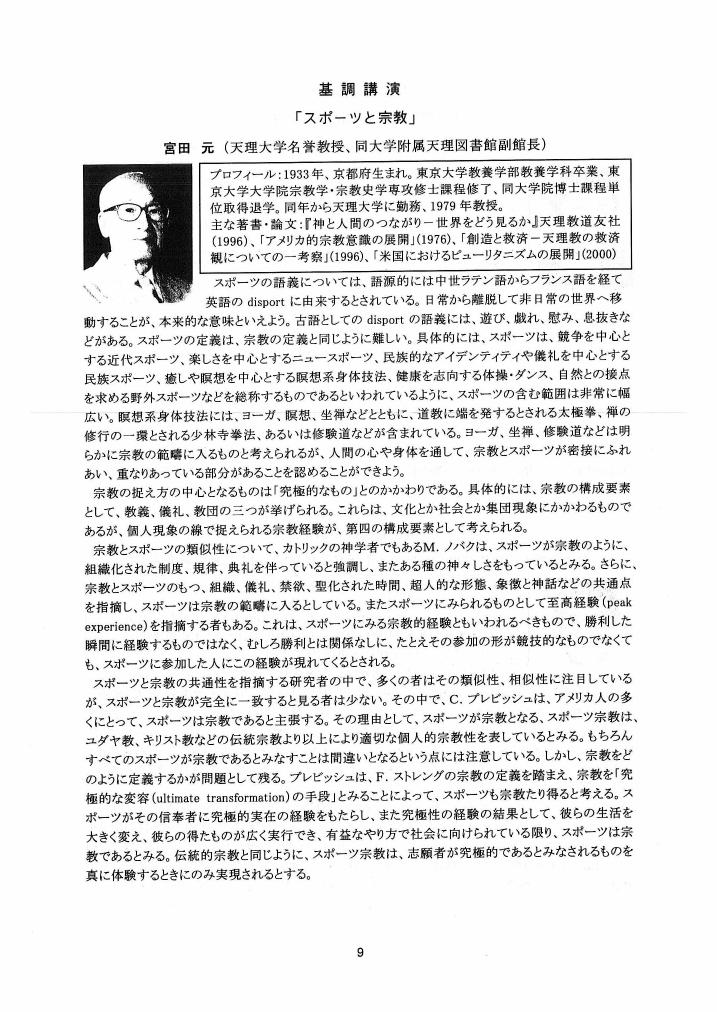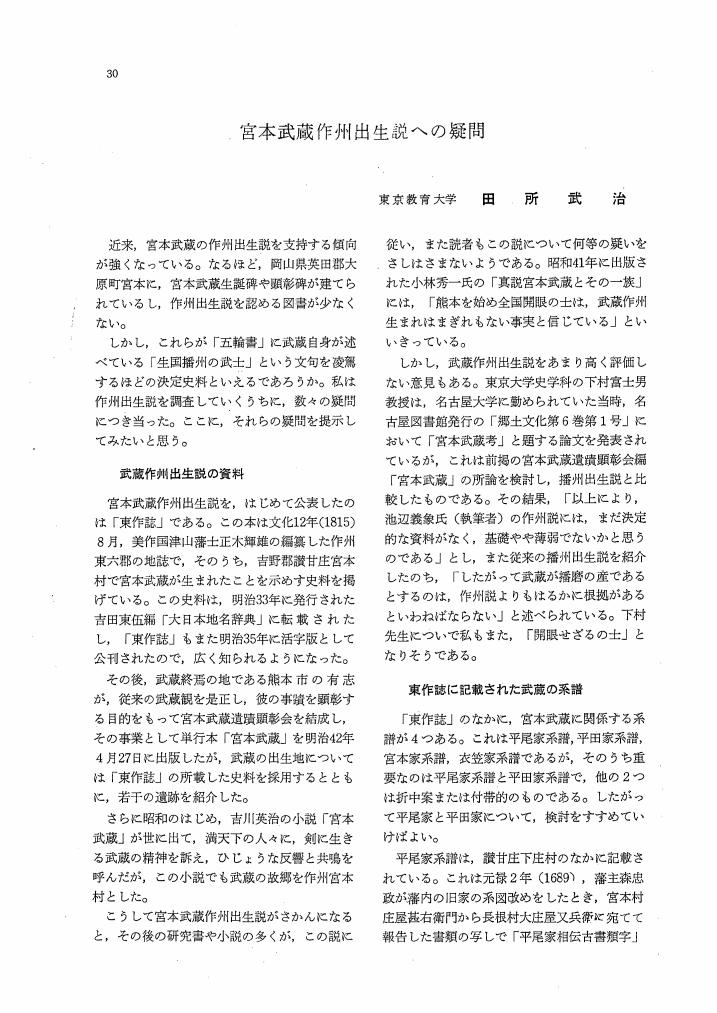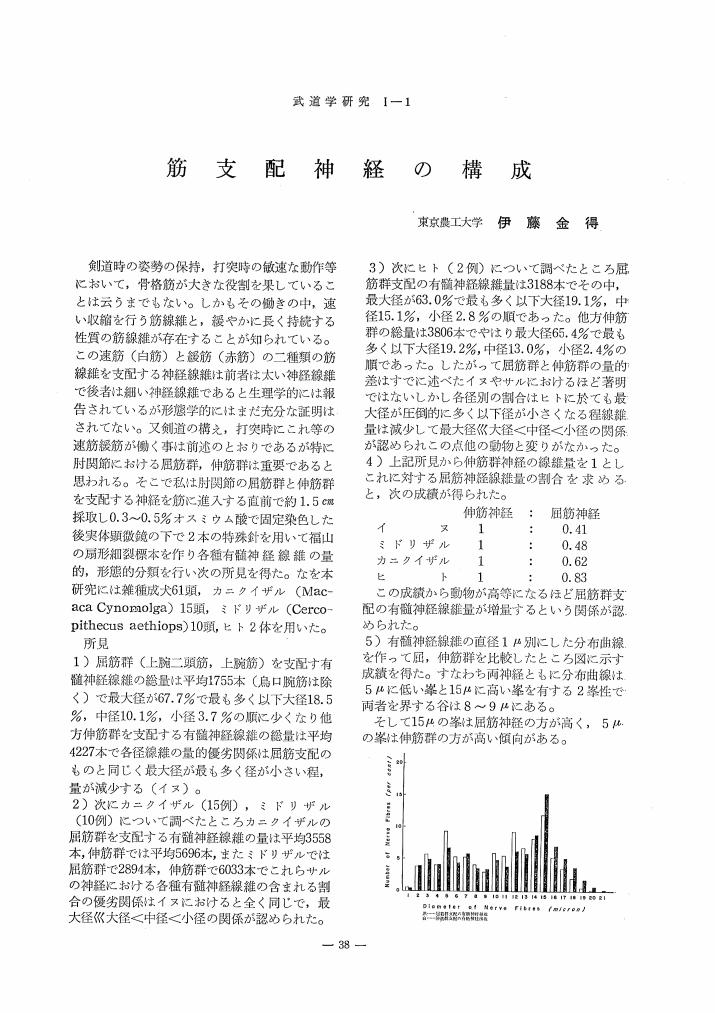3 0 0 0 OA 近代武道教授法の確立過程に関する研究(二)
- 著者
- 中村 民雄
- 出版者
- 日本武道学会
- 雑誌
- 武道学研究 (ISSN:02879700)
- 巻号頁・発行日
- vol.13, no.3, pp.10-18, 1981-03-31 (Released:2012-11-27)
- 参考文献数
- 19
Since the inauguration of the modern educational system, bujutsuka military artists out of office demanded that budo military arts be put in the regular curriculums. To this, Ministry of Education and scholars on physical education argued that budo military arts was inappropriate for regular curriculum. They pointed out that budo military arts could be dangerous and that it lacked the unity of instruction program and of teaching method. They admitted, however, that it could be given as an extra curricular activity to male students who were fifteen years of age or older.To overcome the argument of the Education Ministry, bujutsuka military artists tried to establish “unified style to be taught in the regular curriculums” by unifying tens of, hundreds of schools. In other words, they appointed, on July 27,1906 (the 39th year of Meiji Era), “the committees to study unified style”. Jigoro Kano headed the judo committee and Noboru Watanabe, the kendo committee. Each committee reported, the following month, the style called “Dai Nippon Butoku-kai Seiteikata (Japan Society for Military Arts Virtue Style)”.To be more specific, in judo's case, Kodokan school made the original plans of the committee and they gained the full support.Kendo's case was not so easy. The plans of the committee were not accepted. A new 23-member committee was appointed in October,1912 (the 1st year of Taisho Era) and the committee presented the 10 brand new “Dai Nippon Teikoku Kendokata (Imperial Japan Kendo Styles)”. These styles still exist today and are considered to be the bases of kendo.
3 0 0 0 OA 「自然体」「自護体」「気を付け」の動揺差の描記実験
3 0 0 0 OA 弓道における自然科学の必要性
- 著者
- 稲垣 源四郎
- 出版者
- 日本武道学会
- 雑誌
- 武道学研究 (ISSN:02879700)
- 巻号頁・発行日
- vol.20, no.2, pp.155-156, 1987-11-30 (Released:2012-11-27)
3 0 0 0 OA 佐藤信淵の兵法―兵法-家言―
- 著者
- 黒須 憲 竹田 隆一
- 出版者
- 日本武道学会
- 雑誌
- 武道学研究 (ISSN:02879700)
- 巻号頁・発行日
- vol.37, no.Supplement, pp.38-38, 2004 (Released:2012-11-27)
3 0 0 0 OA 直心影流の成立とその伝系及び伝承に関する一考察
- 著者
- 軽米 克尊 酒井 利信
- 出版者
- 日本武道学会
- 雑誌
- 武道学研究 (ISSN:02879700)
- 巻号頁・発行日
- vol.47, no.3, pp.119-138, 2015-03-31 (Released:2016-03-31)
- 参考文献数
- 29
The aim of this study is to clarify as much as possible the process of formation of the Jikishinkage-ryū, and by comparing that to the lineage and transmission from after its formation, to show how it has changed. Specifically, we verified whether the lineage and transmission mentioned in the scrolls written after the Jikishinkage-ryū’s formation agree with those in the formation process. First, we examined the lineage and transmission in the scrolls written after the formation of Jikishinkage-ryū, and analyzed the formation process to clarify rewritten points in its lineage. We clarified the following six points:1.Yamada Heizaemon Mitsunori referred to himself as the second generation head of Jikishinseitō-ryū, not Jikishinkage-ryū. Therefore, it is after Naganuma Shirōzaemon Kunisato that Jikishinseitō-ryū was renamed Jikishinkage-ryū. This means there is a discrepancy between the period of the Jikishinkage-ryū’s formation and its transmission.2.Multiple discrepancies regarding names and meanings can be spotted between historical materials written by the people mentioned in the lineage of Jikishinkage-ryū, and the transmission mentioned in the scrolls written after Jikishinkage-ryū was formed. This indicates that parts of the transmission were rewritten after the formation of Jikishinkage-ryū.3.It is in the “Jikishinkage-ryū Mokuroku Kudensh” (Catalogue of techniques and oral transmission of Jikishinkage-ry) by Naganuma Shirōzaemon Kunisato that Matsumoto Bizen-no-Kami was first recognized as the founder of Jikishinkage-ryū.4.The Enpi kata of Shinkage-ryū that originates from Kage-ryū can also be confirmed in the catalogue of techniques of Shinshinkage-ryū, although written with different kanji. Therefore, Shinshinkage-ryū can be said to have been affected by Kage-ryū via Shinkage-ryū.5.The name and meaning of each school (ryū) found in the lineage of Jikishinkage-ryū were interpreted with the consideration that the tradition bestowed by the deity of martial arts was inherited from generation to generation. This was from Matsumoto Bizen-no-Kami, the founder, to Yamada Heizaemon Mitsunori, who changed the name of the school to Jikishinkage-ryū.6.It is after Naganuma Shirōzaemon Kunisato that the colophon “Kashima Shinden,” which shows that the style was bestowed by the deity Takemikazuchi, started to be used. It is also after Kunisato that Takemikazuchi was recognized as the originator of the school.
3 0 0 0 OA 韓国における剣道試合の有効打突判定に関する一考察
- 著者
- 加藤 純一
- 出版者
- 日本武道学会
- 雑誌
- 武道学研究 (ISSN:02879700)
- 巻号頁・発行日
- vol.45, no.1, pp.1-21, 2012-09-20 (Released:2014-04-04)
- 参考文献数
- 19
The purpose of this study is to look at the decisions on yuko-datotsu being made through the system of "Claim for Judgment Using VTR" that the Korea Business Kumdo Federation (KBKF) has introduced. This thesis is organized as follows:·Details leading up to the introduction of "Claim for Judgment Using VTR".·Clarification of its regulations and subsidiary.·Analysis of the assessment of decisions made using a video tape recorder (VTR).·The relation between decisions made using the VTR and the requirements of yuko-datotsu.The results obtained were as follow:1.Before the introduction of the "Claim for Judgment Using VTR," systems using 5 referees and 4 referees were investigated.2.The system of "Claim for Judgment Using VTR" was accepted by all concerned.3.In case kantoku has a doubt about the yuko-datotsu, kantoku may file igi with shinpan-shunin in this system.4.Judges check the datotsu-bui of the opponent’s kendo-gu or datotsubu with shinai using the VTR. This method bears some parallels to the instant replay system that many professional sports have adopted.5.But if they move to checking not only datotsubu or datotsu-bui, but also checking the yuko-datotsu, the requirement of yuko-datotsu will be changed by the introduction of this system.
3 0 0 0 OA 嘉納治五郎の「擬働体操」に関する一考察
3 0 0 0 OA 中国明代における槍術の実態に関する研究
- 著者
- 林 伯原
- 出版者
- 日本武道学会
- 雑誌
- 武道学研究 (ISSN:02879700)
- 巻号頁・発行日
- vol.44, no.Supplement, pp.S_24-S_24, 2011 (Released:2012-08-31)
3 0 0 0 OA 武術における相伝制度について
- 著者
- 小佐野 淳
- 出版者
- 日本武道学会
- 雑誌
- 武道学研究 (ISSN:02879700)
- 巻号頁・発行日
- vol.25, no.Supplement, pp.68-68, 1992 (Released:2012-11-27)
3 0 0 0 OA 剣道における片手打ちの打撃力に関する研究
2 0 0 0 OA 基調講演 「スポーツと宗教」
- 著者
- 宮田 元
- 出版者
- 日本武道学会
- 雑誌
- 武道学研究 (ISSN:02879700)
- 巻号頁・発行日
- vol.38, no.Supplement, pp.9, 2005 (Released:2012-11-27)
- 被引用文献数
- 1
2 0 0 0 OA 宮本武蔵作州出生説への疑問
- 著者
- 田所 武治
- 出版者
- 日本武道学会
- 雑誌
- 武道学研究 (ISSN:02879700)
- 巻号頁・発行日
- vol.2, no.2, pp.30-34, 1970-03-01 (Released:2012-11-27)
2 0 0 0 OA 武道の本質(1)修行者の立場から
- 著者
- 佐藤 金兵衛
- 出版者
- 日本武道学会
- 雑誌
- 武道学研究 (ISSN:02879700)
- 巻号頁・発行日
- vol.1, no.1, pp.23, 1968-12-25 (Released:2012-11-27)
2 0 0 0 OA 幕末における剣術廻国修行について(延岡藩鈴木栄の日記を中心に)
- 著者
- 老松 信一
- 出版者
- 日本武道学会
- 雑誌
- 武道学研究 (ISSN:02879700)
- 巻号頁・発行日
- vol.1, no.1, pp.22, 1968-12-25 (Released:2012-11-27)
2 0 0 0 OA 柔道投げ技の類型的研究
2 0 0 0 OA 筋支配神経の構成
- 著者
- 伊藤 金得
- 出版者
- 日本武道学会
- 雑誌
- 武道学研究 (ISSN:02879700)
- 巻号頁・発行日
- vol.1, no.1, pp.38, 1968-12-25 (Released:2012-11-27)
2 0 0 0 OA 柳生新陰流の研修,指導に就いて
- 著者
- 大坪 指方
- 出版者
- 日本武道学会
- 雑誌
- 武道学研究 (ISSN:02879700)
- 巻号頁・発行日
- vol.1, no.1, pp.15, 1968-12-25 (Released:2012-11-27)
2 0 0 0 OA 「剣道の基本打撃動作分析に関する一考察」
- 著者
- 平川 信夫 坪井 三郎
- 出版者
- 日本武道学会
- 雑誌
- 武道学研究 (ISSN:02879700)
- 巻号頁・発行日
- vol.1, no.1, pp.32, 1968-12-25 (Released:2012-11-27)
2 0 0 0 OA 「しない」の長さについての一考察
- 著者
- 山根 幸恵
- 出版者
- 日本武道学会
- 雑誌
- 武道学研究 (ISSN:02879700)
- 巻号頁・発行日
- vol.1, no.1, pp.14, 1968-12-25 (Released:2012-11-27)
